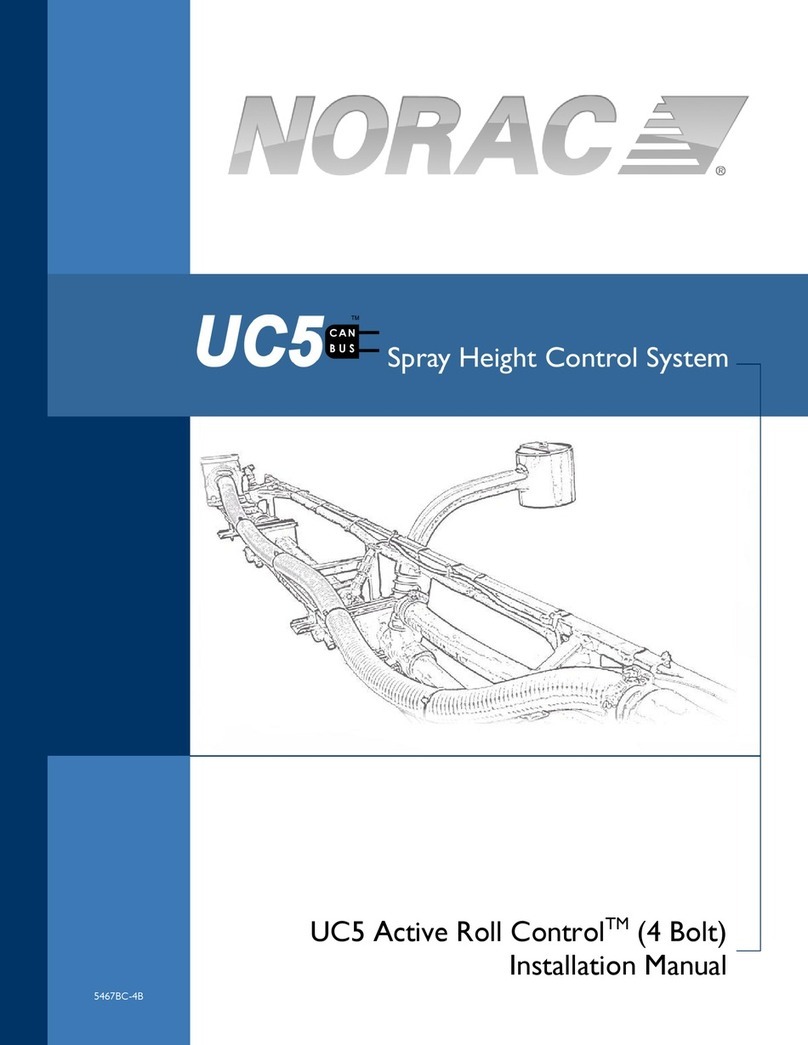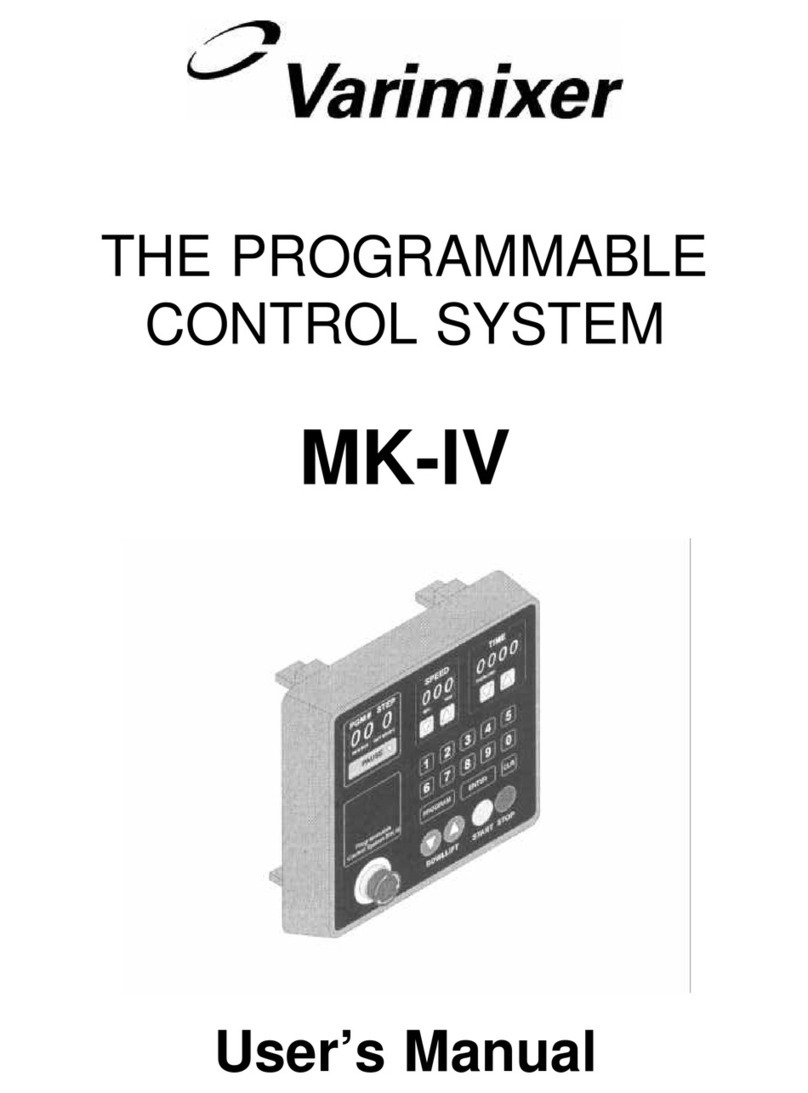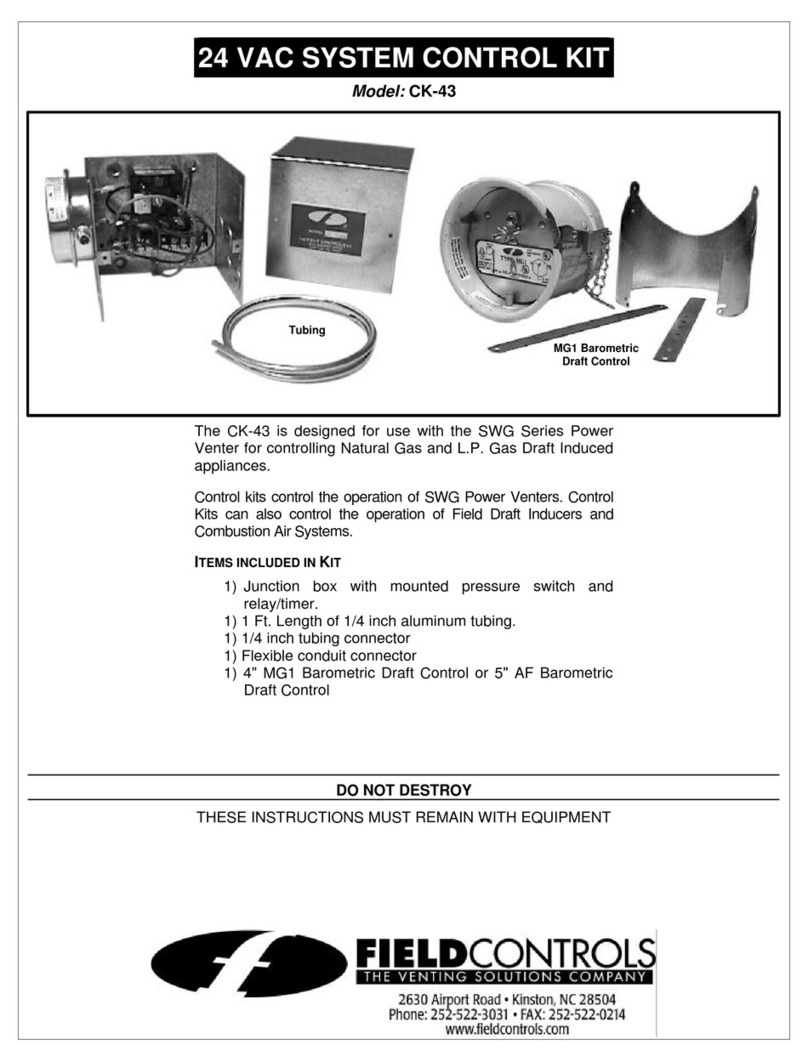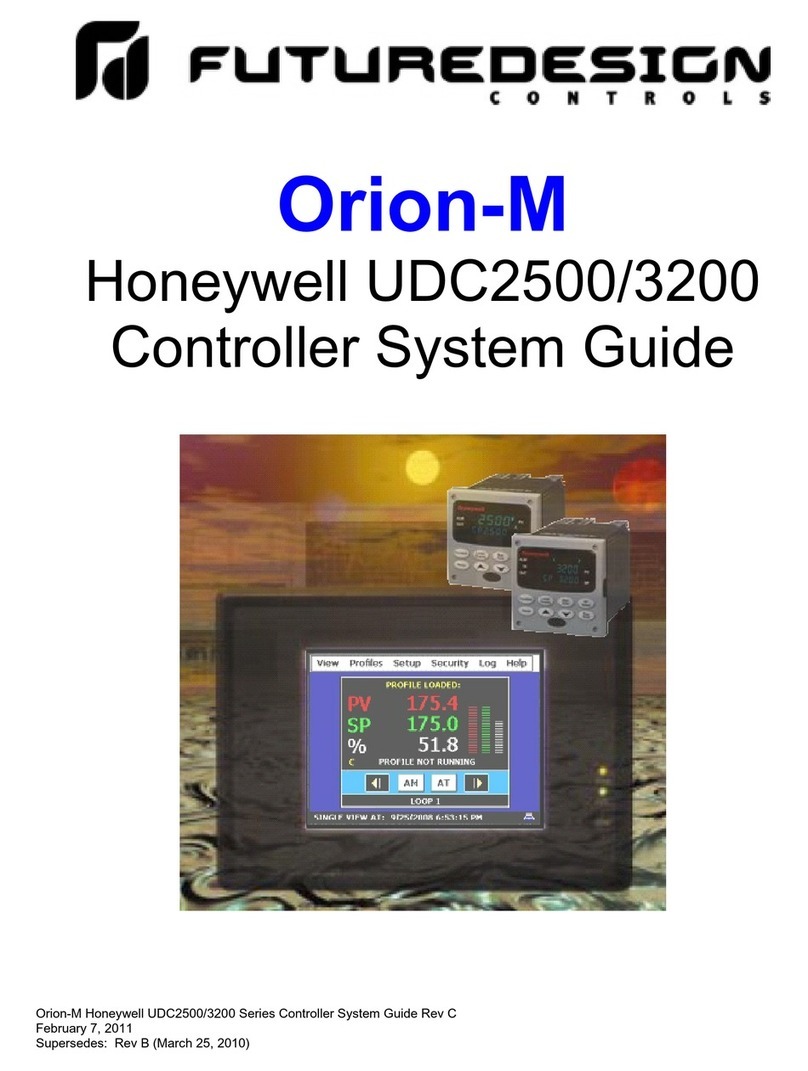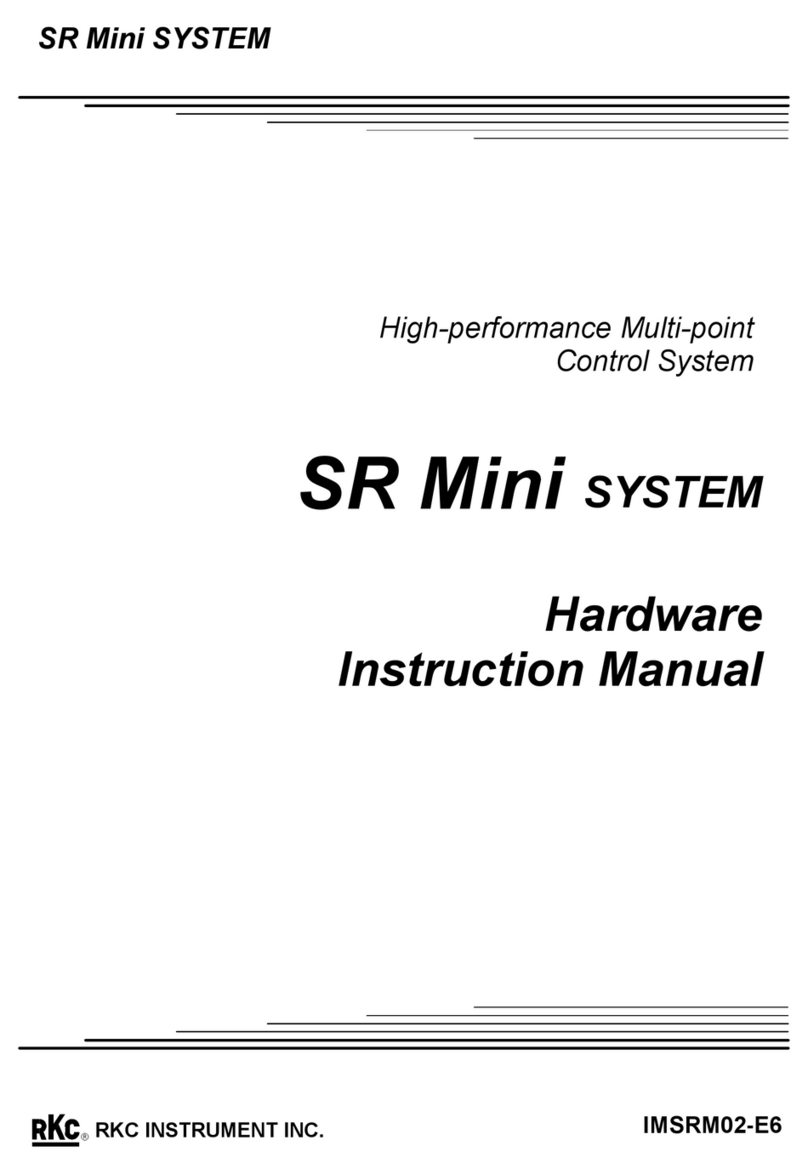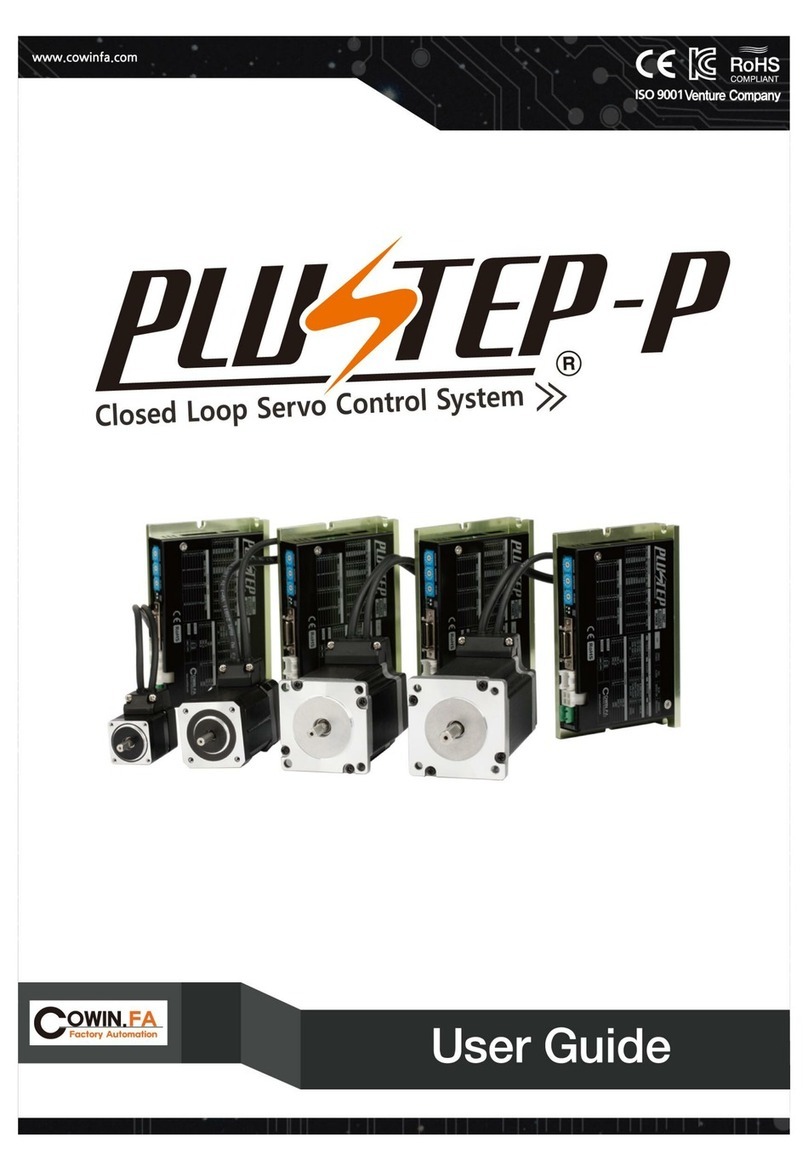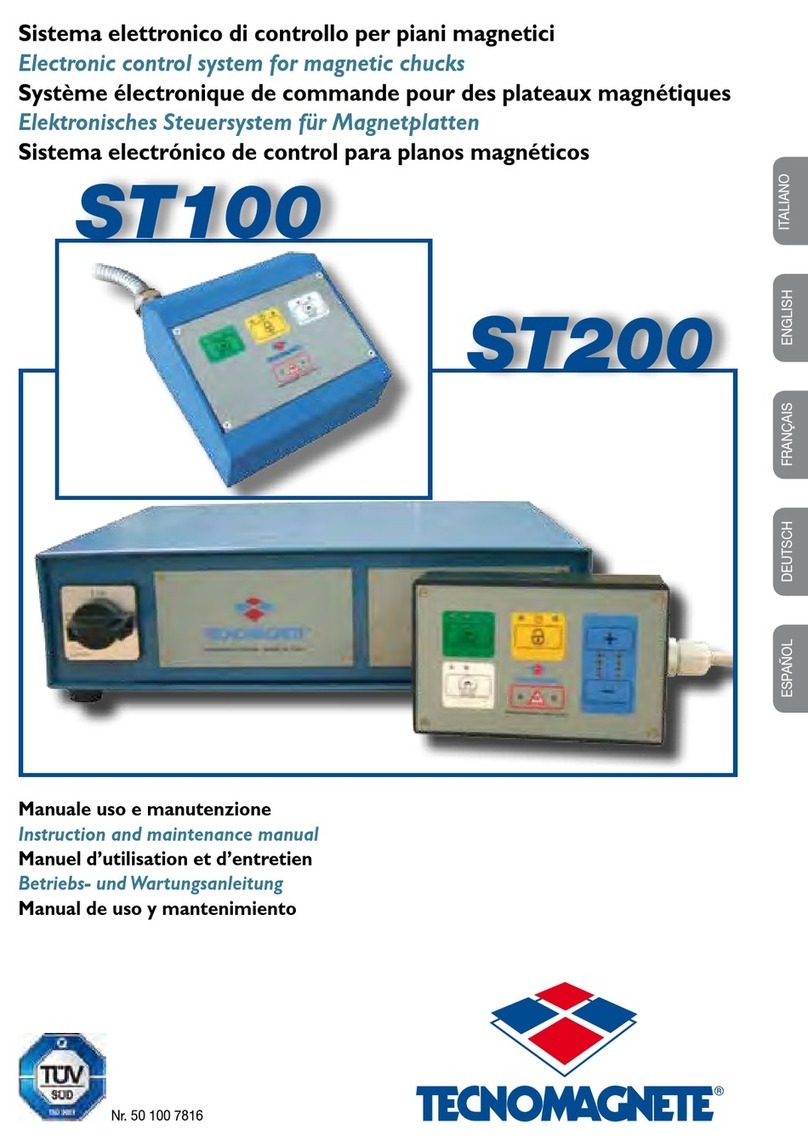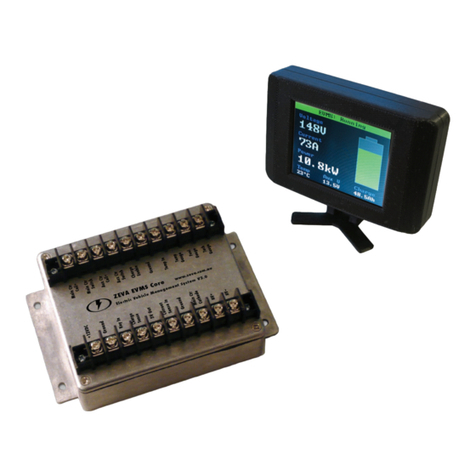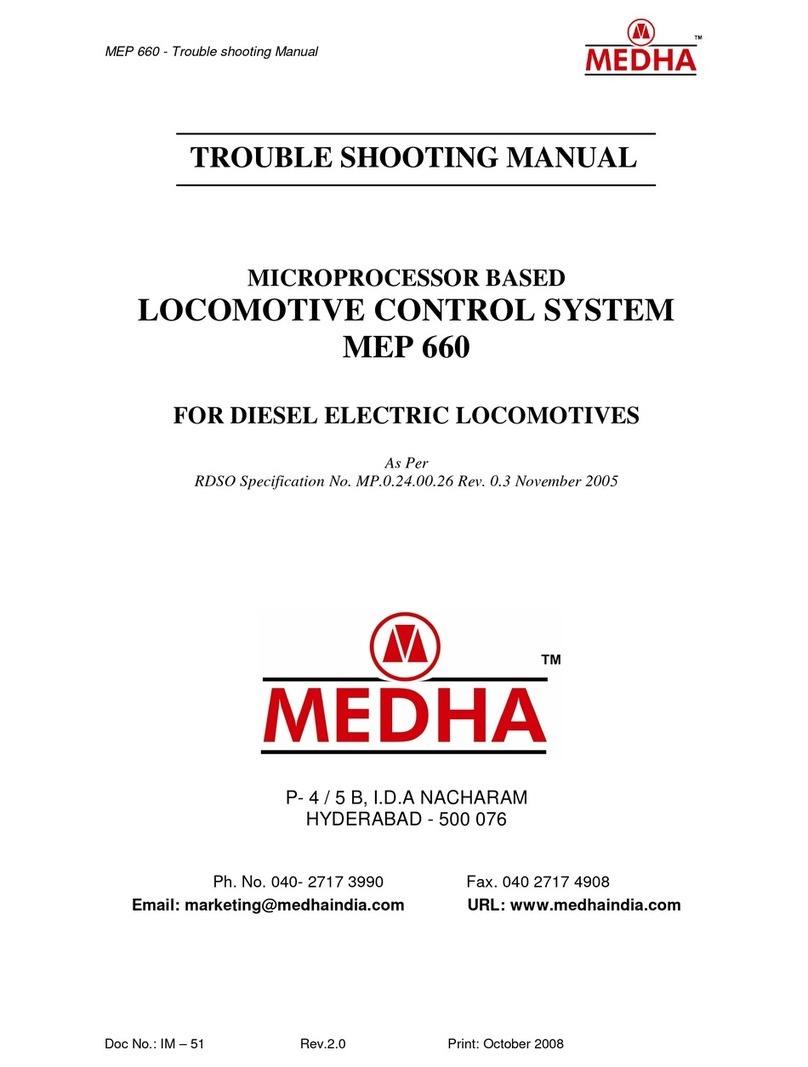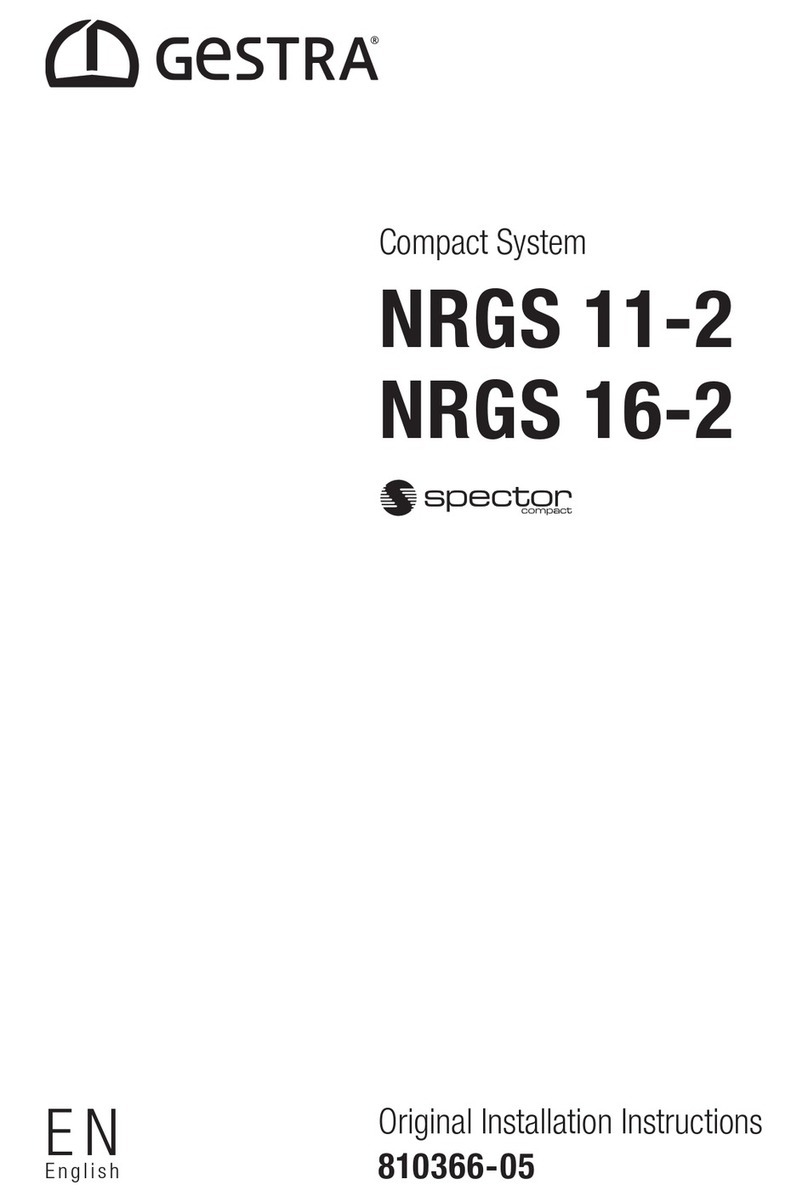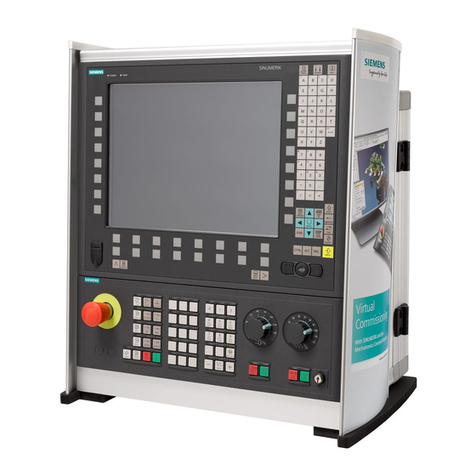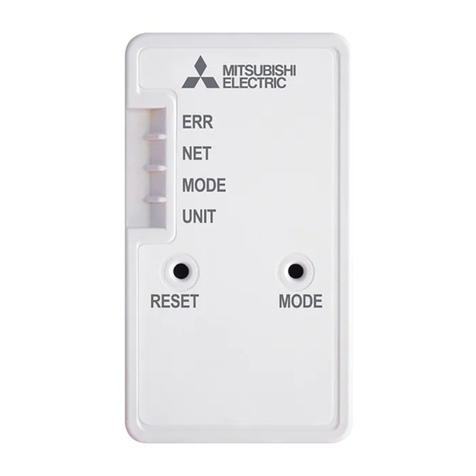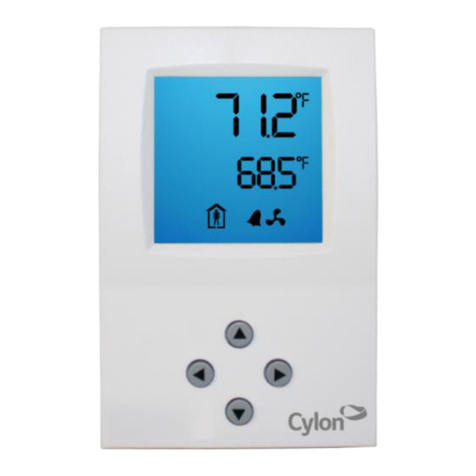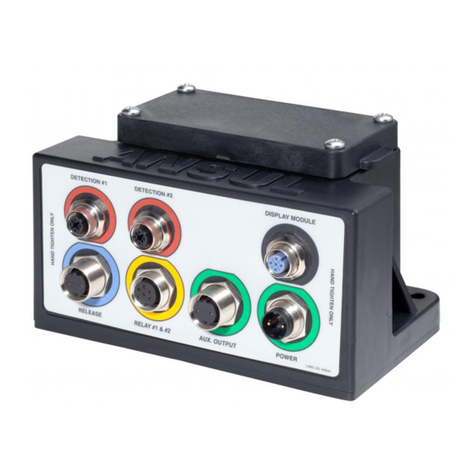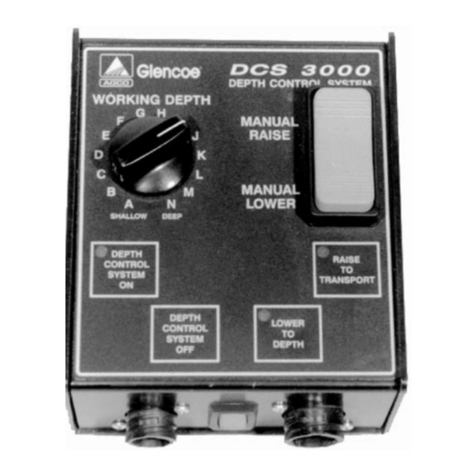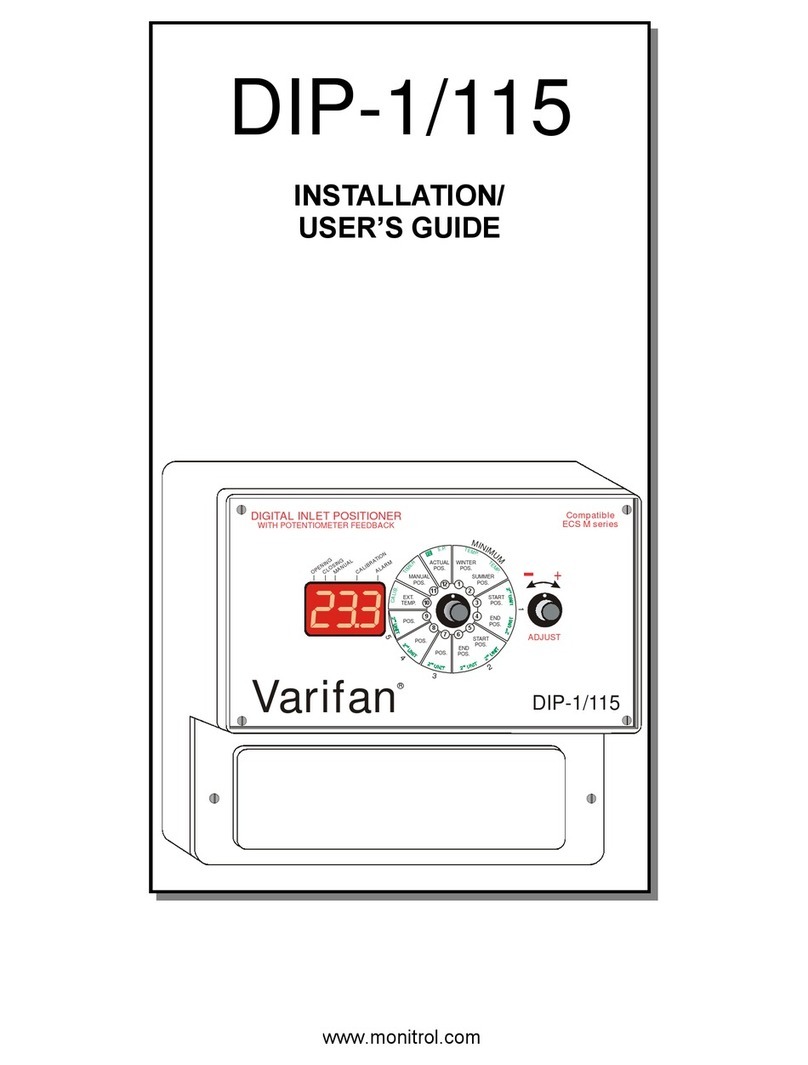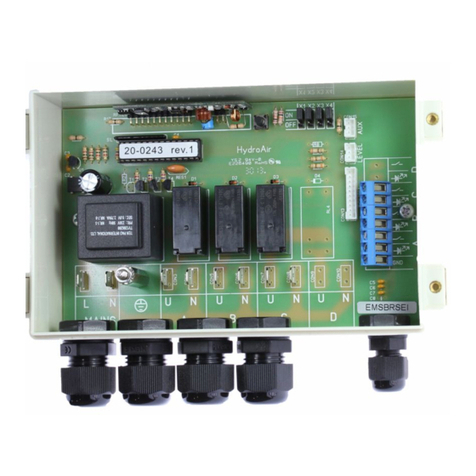voestalpine KREMSBARRIER 1 RH3 User manual

www.voestalpine.com/strassensicherheit
voestalpine Krems Finaltechnik GmbH ONE STEP AHEAD.
ASSEMBLY INSTRUCTIONS
for the vehicle barrier system
KREMSBARRIER 1 RH3
for pile-drivable subgrades
Performance class in accordance with EN 1317-2:
Containment level: H3
Impact severity level: A
Working width: W5
Production and sales:
voestalpine Krems Finaltechnik GmbH
Schmidhüttenstraße 5, 3500 Krems, Austria
T.: +43/50304/14-670
F.: +43/50304/54-628
E-Mail: info.vasts@voestalpine.com
ID: VTMB106
Version: 01/2015

www.voestalpine.com/strassensicherheit
voestalpine Krems Finaltechnik GmbH ONE STEP AHEAD.
Assembly instructions KB 1 RH3 on pile-drivable subgrade page 2 of 13
Contents
Safety instructions..................................................................................................................3
Proper use..............................................................................................................................3
Technical description of the vehicle barrier system.................................................................3
Transport................................................................................................................................4
Requirements for installation..................................................................................................4
Suitable subgrade ..................................................................................................................5
Installation of the vehicle barrier system in accordance with data sheets B106/2 and B106/3
(see appendix)........................................................................................................................6
1. Ramming IPE160 posts............................................................................................6
2. Ramming C140 posts...............................................................................................7
3. Mounting extension profiles for the upper guard rail belt...........................................7
4. Mounting guard rails (barriers) S1 for the upper guard rail belt.................................8
5. Install sliding profile S1.............................................................................................8
6. Mounting the "round damping element" (round damper)...........................................9
7. Mounting extension profiles for the lower guard rail belt.........................................10
8. Mounting S1 guardrail (crash barrier) for the lower guard rail belt ..........................10
9. Shims.....................................................................................................................11
10. Torques for threaded connections..........................................................................11
11. Conformity checks..................................................................................................12
12. Clearing the construction site.................................................................................12
Repairing the vehicle barrier system.....................................................................................12
Durability of corrosion protection..........................................................................................13
Inspection and maintenance.................................................................................................13
Recycling / Disposal.............................................................................................................13
Appendix 1.................................................................................................Data Sheet B106/2
Appendix 2.................................................................................................Data Sheet B106/3
Appendix 3........................................................................Parts List KREMSBARRIER 1 RH3

www.voestalpine.com/strassensicherheit
voestalpine Krems Finaltechnik GmbH ONE STEP AHEAD.
Assembly instructions KB 1 RH3 on pile-drivable subgrade page 3 of 13
Safety instructions
As working on vehicle barrier systems should generally be categorised as especially
dangerous, such tasks should always be carried out under the supervision and
instruction of applicably trained specialist personnel.
These assembly instructions assume that supervision and instruction is provided by
such specialist personnel on-site.
All construction personnel must wear personal protective equipment in accordance
with EC directive 89/686/EEC.
Proper use
The task of a vehicle barrier system is to restrain and redirect vehicles straying off of
the carriageway and thereby minimise the consequences for passengers as well as
for other road users and objects worthy of protection.
Note: Vehicle barrier systems are generally to be used only in
situations where straying off of the carriageway is likely to result
in more severe consequences for vehicles and their passengers
as well as for third parties or objects worthy of protection than a
collision with the barrier system.
Technical description of the vehicle barrier system
Performance class in accordance with ÖNORM, EN 1317-2:
Containment level H3
Impact severity level / ASI A / 1.0
Working width / level W5 / 1.7 m
Test length 57.00 m
System dimensions
System width 640 mm
System height 1,400 mm
Ram depth 1250 mm and 1150 mm

www.voestalpine.com/strassensicherheit
voestalpine Krems Finaltechnik GmbH ONE STEP AHEAD.
Assembly instructions KB 1 RH3 on pile-drivable subgrade page 4 of 13
Transport
The following points are to be observed when transporting components of the vehicle
barrier systems:
·A regulation load securing system is to be made available.
·When transporting on salt-treated roads, the components must be transported
on enclosed / tarpaulin-covered truck trailers.
·Avoid contact with other aggressive transported materials (e.g. residual
chemicals on the loading space).
·The lifting gear is to be designed for a maximum package weight of 2.5 t.
Note: A proper load securing system must also be used when
transporting equipment for installation of vehicle barrier
systems.
Requirements for installation
The executing contractor (=installation firm) must have the professional aptitude and
general qualifications for the undertaking of such installation work.
The installation firm must be in possession of the technical equipment required for
the professional and proper undertaking of the installation work. This includes, in
addition to a fleet of vehicles adapted for this type of work, especially the pile-driving
equipment for the required post segments with adapted drive heads and guides as
well as drilling equipment, impact screwdrivers, mandrels and measuring equipment,
etc.
The installation firm must maintain all relevant national and international laws,
regulations, directives, etc. and ensure that the required permits are available and
have been submitted in good time.
The following must be checked by the installation firm prior to the start of installation
·Possible existing installations in the area of the anchoring must be assessed
and correspondingly taken into consideration
·The suitability of the subgrade (soil class, sufficient bore depth, evenness, etc.)
is to be checked.
·The definitive reference line must be marked for installation of the vehicle barrier
system.
·The delivery of materials must be checked for correctness and completeness
and complaints must be immediately forwarded to the supplier.
·It must be ensured that the building site is properly secured.

www.voestalpine.com/strassensicherheit
voestalpine Krems Finaltechnik GmbH ONE STEP AHEAD.
Assembly instructions KB 1 RH3 on pile-drivable subgrade page 5 of 13
The customer is to be informed immediately in writing in the event that deviations are
determined and the matter is to be clarified.
If components for the vehicle barrier system are to be intermediately stored, then the
following warehouse conditions are to be fulfilled:
·The storage area must be capable of bearing the load and must be accessible
with an HGV truck.
·Galvanised components may not be stored on tall, damp grass, in standing
water or mud.
·The packages are to be stored in the original packaging on wooden slats with
approximately 150 mm gap to the ground.
·The components should be stored at a slight angle, so that water can drain off.
·The formation of puddles (collection of moisture) is to be avoided.
·Foil used for purposes of securing the layers during transportation is to be
removed.
·The storage area may not be treated with defrosting agents.
Long-term storage of bundled components outdoors is to be avoided.
Suitable subgrade
The subgrade is considered suitable for the installation of the vehicle barrier system if
the following conditions are fulfilled:
·Soil classes 3, 4 and 5 of ÖNORM B 2205 and compacted subgrade which
can be graded into these soil classes.
·Degree of compaction Dpr ≥ 97%
·The subgrade is suitable for pile driving.
Soil classes 1, 3, 4 and 5 of ÖNORM B 2205 and compacted subgrades which
can be graded into these soil classes and which contain no blocks are suitable
for pile driving.
Note: If the subgrade is unsuitable for pile driving, then there is the
option to drill boreholes to the required depth or install suitable
empty pipes, which can subsequently be filled and compacted
with suitable material.

www.voestalpine.com/strassensicherheit
voestalpine Krems Finaltechnik GmbH ONE STEP AHEAD.
Assembly instructions KB 1 RH3 on pile-drivable subgrade page 6 of 13
Installation of the vehicle barrier system in accordance with data sheets B106/2
and B106/3 (see appendix)
It is not necessary to pre-assembly the vehicle barrier system components in the
factory.
Due to the fact that the vehicle barrier system is not pre-stressed, the ambient
temperature at the time of installation is irrelevant.
1. Ramming IPE160 posts
The minimum 2,500 mm long IPE160 post is to be driven vertically into the subgrade
with a suitable pile driver, so that the upper edge of the post section is 1,350 ±40
mm above the reference level. The three elongated holes 20x40 must be on the
upper end of the post section (post head) on the side facing the traffic.
The pile driver must be equipped with a suitable drive head to fit the IPE140 section,
in order to prevent deformation or damage to the hot-dip galvanised coating on the
post head. A guide adapted to the IPE140 section is to be mounted to the pile driver
near the upper edge of the ground in order to ensure precise positioning of the post
during the pile driving process.
The regulation centre distance of the posts is 1900 mm.
Figure
1

www.voestalpine.com/strassensicherheit
voestalpine Krems Finaltechnik GmbH ONE STEP AHEAD.
Assembly instructions KB 1 RH3 on pile-drivable subgrade page 7 of 13
2. Ramming C140 posts
The IPE140 posts must be aligned centrally between the IPE160 posts, as viewed in
the longitudinal direction. The front faces of the posts lie adjacently to the I160 posts
by 175 mm nearer to the carriageway (see Fig. 1).
The minimum 2,000 mm long V140 post is to be driven vertically into the subgrade
with a suitable pile driver, so that the upper edge of the post section is 750 ±40 mm
above the reference level. The open ends of the post sections must be aligned
pointing away from the traffic and the hole pattern 18x36 mm must be on the upper
end of the post section (post head).
The pile driver must be equipped with a suitable drive head to fit the V140 section, in
order to prevent deformation or damage to the hot-dip galvanised coating on the post
head. A guide adapted to the V140 section is to be mounted to the pile driver near
the upper edge of the ground in order to ensure precise positioning of the post during
the pile driving process.
The regulation centre distance of the posts is 1900 mm.
3. Mounting extension profiles for the upper guard rail belt
The extension profile is to be aligned as a continuous belt between the guard rail belt
and the IPE160 posts.
The trapezoidal cross-section of the extension profile surrounds the centre of the
guard rail. The rectangular holes 18x25 mm in the guard rail axis and extension
profiles must align (see Fig. 2).
The overlapping of the extension
profiles is to be executed in accordance
with the overlapping of the guard rails.
The two drilled 18 mm diameter holes
indicate that the extension profiles in
the jointed area (upper part) are facing
the respective carriageway (see Fig. 2).
The extension profiles are to be
mounted together with the guard rails
and are fixed in place with the bolted
unions in the guard rail axis.
Figure
2

www.voestalpine.com/strassensicherheit
voestalpine Krems Finaltechnik GmbH ONE STEP AHEAD.
Assembly instructions KB 1 RH3 on pile-drivable subgrade page 8 of 13
4. Mounting guard rails (barriers) S1 for the upper guard rail belt
The guardrails S1 are to be overlapped in the jointed area in accordance with the
direction of traffic, so that vehicles cannot get caught up on them. The drilled 9 mm
diameter hole indicates that the guard rail in the joint region (upper part) is facing the
respective carriageway. In order to be able to overlap the guardrail in the jointed
area, the carriageway side of the guardrail ends (lower part) are goosenecked.
The guardrails are bolted together with the extension profiles on the guardrail axis at
each IPE160 post (every ~1.900 mm). In order to do so, a coach bolt M16x50 FK 4.6
is fed through the axially aligned bore holes in the guardrail S1 and the elongated
hole 20x40 in front of the extension profile bar on the IPE160 post, as viewed in the
direction of traffic. It is then secured in place with a hexagon nut M16 FK 5 (see Fig.
2).
The guardrail joint is additionally secured with six coach bolts M16x35 FK 4.6. It is to
be ensured when tightening the hexagon nuts M16 FK 5 that the square-shaped anti-
twist protection for the bolt head is correctly positioned to the guardrail.
A washer 40x18x4 is to be aligned under each hexagon nut M16 FK 5. The exception
to this is the four off-centre bolts in the crash barrier joint, where two reinforcement
flanks are to be installed instead of the washers 40x18x4 (see fig. 2).
5. Install sliding profile S1
The sliding profiles are to be aligned on the side of the V140 post pointing towards
the traffic, so that the two sides lay flush with the V140 posts.
The sliding profiles are attached to each V140 post. In order to do so, a coach bolt
M10x25 FK 4.6 is fed through
the inner side of the sliding
profile through the elongated
hole 160x12 in the upper flank
of the sliding profile and
through the elongated hole
30x12 mm of the V140 post
and fixed in place with a
washer 11 and hexagon nut
M10 FK 5.
The sliding profiles are to be overlapped in the jointed area in accordance with the
direction of traffic, so that vehicles cannot get caught up on them (see Fig. 3).
Figure 3

www.voestalpine.com/strassensicherheit
voestalpine Krems Finaltechnik GmbH ONE STEP AHEAD.
Assembly instructions KB 1 RH3 on pile-drivable subgrade page 9 of 13
The carriageway facing the respective slide profiles in the joint region (upper part) is
indicated by the stamped plate marked with ⌂on voestalpine crash barriers. The
sliding profile joint is to be aligned, as seen from the direction of travel ~180 mm after
the post axis and secured in place with three coach bolts M16x35 FK 4.6, washers
40x18x4 and nuts M16 FK 5 (see Fig. 3).
6. Mounting the "round damping element" (round damper)
The round damper is to be bolted in place to the V140 post section with two hexagon
bolts M10x25 FK 4.6. The two keyholes in the round damper must align with the two
elongated holes 18x36 mm on the front face of the post section (see Fig. 1). The
hexagon bolts M10x25 FK 4.6 are inserted through the pre-mounted washer 11 from
the round damper, through the narrow side of the axially positioned keyhole (narrow
side up) and the elongated holes (see Fig. 4). A gusset plate 120x50x2 with two
axially aligned bore holes 12 mm diameter is placed onto the two bolts M10x25 FK
4.6 on the inner side of the post and fixed in place with two hexagon nuts M10 FK 5
(see Fig. 5).
Figure 5
Figure 4

www.voestalpine.com/strassensicherheit
voestalpine Krems Finaltechnik GmbH ONE STEP AHEAD.
Assembly instructions KB 1 RH3 on pile-drivable subgrade page 10 of 13
7. Mounting extension profiles for the lower guard rail belt
The extension profile is to be aligned as a continuous belt between the guard rail belt
and the round dampers (see Fig. 6).
The trapezoidal cross-section of the extension profile surrounds the centre of the
guard rail. The rectangular holes 18x25 mm in the guard rail axis and extension
profiles must align.
The overlapping of the extension profiles is to be executed in accordance with the
overlapping of the guard rails. The two drilled 18 mm diameter holes indicate that the
extension profiles in the jointed area (upper part) are facing the respective
carriageway (see Fig. 6).
The extension profiles are to be mounted together with the guard rails and are fixed
in place with the bolted unions in the guard rail axis (see Fig. 6).
8. Mounting S1 guardrail (crash barrier) for the lower guard rail belt
The guardrails S1 are to be overlapped in the jointed area in accordance with the
direction of traffic, so that vehicles cannot get caught up on them. The drilled 9 mm
diameter hole indicates that the guard rail in the joint region (upper part) is facing the
respective carriageway. In order to be able to overlap the guardrail in the jointed
area, the carriageway side of the guardrail ends (lower part) are goosenecked.
The guardrails are bolted in place together with the extension profiles to the guard
rail axis on each round damper (every ~1.900 mm) with a coach bolt M16x50 FK 4.6
(see Fig. 6).
The guardrail joint is additionally secured with six
coach bolts M16x35 FK 4.6. It is to be ensured when
tightening the hexagon nuts M16 FK 5 that the square-
shaped anti-twist protection for the bolt head is
correctly positioned to the guardrail.
A washer 40x18x4 is to be aligned under each
hexagon nut M16 FK 5. The exception to this is the
four off-centre bolts in the crash barrier joint, where two
reinforcement flanks are to be installed instead of the
washers 40x18x4 (see fig. 6).
Figure 6

www.voestalpine.com/strassensicherheit
voestalpine Krems Finaltechnik GmbH ONE STEP AHEAD.
Assembly instructions KB 1 RH3 on pile-drivable subgrade page 11 of 13
9. Shims
Generally, the vehicle barrier system should be installed so that shims are not
required. However, if shims are required due to conditions on site, then the following
points must be observed:
·The regulation centre distance of the posts is to be retained as far as possible.
·If the longitudinal elements have to be sawn, it is to be ensured that the cut is
made clearly.
·The cut is to be executed so that the swarf cannot damage the hot-dip
galvanised sections (risk of extraneous rust or damage to the coating).
·The burrs are to be removed and the cut area is to be protected against
corrosion with cold-galvanizing paint in accordance with EN ISO 1461.
·The hole pattern for joining a shim must correspond to the regulation design
and the gaps to the corners may not be smaller than those of the regulation
design.
·Flame cutting is generally impermissible for installation work!
10. Torques for threaded connections
Thread / strength class Torque
min. max.
M10 / 4.6 10 Nm 17 Nm
M16 / 4.6 35 Nm 70 Nm
It is to be ensured that a sufficiently large bearing surface is given in the clamped
area for tightening unscheduled prestressed threaded connections when applying the
above specified torques.

www.voestalpine.com/strassensicherheit
voestalpine Krems Finaltechnik GmbH ONE STEP AHEAD.
Assembly instructions KB 1 RH3 on pile-drivable subgrade page 12 of 13
11. Conformity checks
The following checks are to be undertaken during the installation process and by way
of final inspection:
·Correct alignment and bolting of the structural components
·Vertical gap between the barriers and upper edge of the tension bar and
reference level
·Horizontal gap between the front edge of the protective barrier post and the
respective reference line for the installation
·Continuous line of the longitudinal elements (protective barrier post, tension
bar)
Suitable corrective measures are to be undertaken in the event of deviations outside
the range of permissible tolerances.
It is to be checked that the system has been installed correctly in accordance with the
installation instructions upon completion of the installation work and this should be
documented in the acceptance certificate.
12. Clearing the construction site
All residual materials (including connecting devices), packaging and supporting
timber, screw boxes, foil, packaging straps, etc. and any other rubbish must be
removed from the site.
The construction site is subsequently to be swept clean.
Repairing the vehicle barrier system
All components which exhibit mechanical damage or deformation subsequent to an
accident are to be replaced by new components. The installation of these
components is to be undertaken in accordance with the installation instructions.
New connecting devices are generally to be used when repairing a vehicle barrier
system.

www.voestalpine.com/strassensicherheit
voestalpine Krems Finaltechnik GmbH ONE STEP AHEAD.
Assembly instructions KB 1 RH3 on pile-drivable subgrade page 13 of 13
Durability of corrosion protection
The vehicle barrier system's components are hot-dip galvanised in accordance with
EN ISO 1461 to ensure its operational lifetime / durability of protection.
The duration of protection for galvanised coatings is defined under EN ISO 14713
and is essentially dependent on the thickness of the coating. Generally, it can be
assumed that the zinc coating will erode continuously over the entire area. Due to the
known effective macroclimatic corrosion load for roads, corrosion category C4, zinc
corrosion amounting to 2.1 to 4.2 µm per year is to be expected. Therefore,
calculating with the average zinc layer thickness of minimum 70 µm in accordance
with EN ISO 1461, a protection duration of minimum 15 years is given.
Note: The above specified calculated duration of protection applies to
macroclimatic effective corrosion loads only. Special
macroclimatic conditions could lead to a reduced duration of
protection.
Inspection and maintenance
Vehicle barrier systems manufactured by voestalpine Krems Finaltechnik GmbH are
fundamentally maintenance free.
The vehicle barrier system is to be visually inspected as part of the continuous
inspection trips carried out by the carriageway maintenance authority, however, this
must be realised at least once per year, preferably after the winter season. In doing
so, it is to be checked, among other things, that there are no deformed segments and
that the bolting is correct.
Recycling / Disposal
Dismantled vehicle barrier systems or exchanged components replaced during the
repair process are to be disposed of and recycled in accordance with statutory
requirements. All vehicle barrier system components manufactured by voestalpine
Krems Finaltechnik GmbH are 100% recyclable.
Packaging and other waste is to be recycled or disposed of in accordance with
statutory requirements.
Vehicle barrier systems manufactured by voestalpine Krems Finaltechnik GmbH do
not contain toxic or potentially hazardous materials.

www.voestalpine.com/strassensicherheit
voestalpine Krems Finaltechnik GmbH ONE STEP AHEAD.
SAFETY BARRIERS
870±40
290±40
1400±40
400±40
315±20
490±40
120±10
640±40
1350±40
1150±40
750±40
1250±40
3800±9
3800±9
3800±9 3800
±9
1900±20 1900±20
1900±20
1900±20 1900±20
3800±9
1900±20
950±50 950±50 950±50 950±50
KREMSBARRIER1RH3
THB M16x35-4.6
washer disc18x4
3 pcs /joint
THB M10x25-4.6
washer disc11
1 pcs / post
hex bolt M10x25-4.6
washer disc11
2 pcs / post
THB M16x35-4.6
30-001.0990E
6 pcs /joint
washer disc18x4
30-001.0995E
2 pcs /joint
THB M16x50-4.6
washer disc18x4
30-001.0995E
1 pcs / post
sliding profile
30-001.1830D
guardrailsS1
30-001.3800-
round impact absorber
30-001.1810C
side bracket
30-001.1807E
2 pcs /joint
additional section
30-021.3800-
V140-post 2,00m
30-001.2721D
IPE160-post 2,50m
30-005.2011E
01/2015
product specification sheetB106/2
lug 2 x 40x 120
1 pcs / post
dircetion of traffic
Roadside Restraint System with lower guardrail
suitable for pile driving ground conditions

www.voestalpine.com/strassensicherheit
voestalpine Krems Finaltechnik GmbH ONE STEP AHEAD.
SAFETY BARRIERS
KREMSBARRIER1RH3
01/2015
installation drawing
C
E
D
B
A
round impact absorber
guardrail S1
V140-post
additional section H2
sliding section
hex bolt M10x25
B
THB M16 x 35
THB M10 x 25 D
side bracket
C
side bracket
THB M16 x 35
A
THB M16 x 50
THB M16 x 50
THB M16 x 35
A
FIPE160-post
E
F
lug 120x40x2
B
product specification sheetB106/3Roadside Restraint System with lower guardrail
suitable for pile driving ground conditions

www.voestalpine.com/strassensicherheit
voestalpine Krems Finaltechnik GmbH ONE STEP AHEAD.
SAFETY BARRIERS
Parts list
KREMSBARRIER 1 RH3
Roadside Restraint System with
lower guardrail suitable for pile
driving ground conditions
Requirements for a field with a 3.80 m length
part name of the item weight
[kg] drawing- number material /
quality corrosion protection
2guardrail S1 3,80m 46,50 30-011.3800- S355JO acc. to EN ISO 1461
2additional section H2 29,00 30-021.3800- S235JR acc. to EN ISO 1461
2round impact absorber 6,10 30-001.1810C S235JR acc. to EN ISO 1461
2lug 120x40x2 0,10 30-001.1806E S235JR acc. to EN ISO 1461
2V140-post 2,00 m 30,00 30-001.2721D S235JR acc. to EN ISO 1461
2IPE160-post 2,50 m 40,30 30-005.2011E S235JR acc. to EN ISO 1461
1sliding section 3,80m 28,79 30-001.1830D S235JR acc. to EN ISO 1461
4side bracket 0,78 30-001.1807E S235JR acc. to EN ISO 1461
15 THB M16x35-4.6 +nut 0,13 30-001.0990E 4.6 acc. to EN ISO 10684
4 THB M16x55-4.6 +nut 0,11 DIN 603 4.6 acc. to EN ISO 10684
11 washer 40x18x4 0,03 30-001.0995E 100HV acc. to EN ISO 10684
2 THB M10x25-4.6 +nut 0,04 DIN 603 4.6 acc. to EN ISO 10684
4hex bolt M10x25-4.6 +nut 0,04 ISO 4018 4.6 acc. to EN ISO 10684
6washer 11 0,00 ISO 7091 100HV acc. to EN ISO 10684
01/2015
Table of contents

